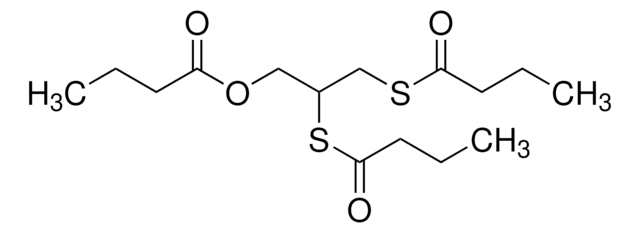D7881
meso-2,3-Dimercaptosuccinic acid
~98%
Synonym(s):
2,3-Dithio-meso-tartaric acid, DIM-SA, DMS, DMSA, Succimer
About This Item
Recommended Products
assay
~98%
form
powder
mp
196-198 °C (dec.) (lit.)
storage temp.
−20°C
SMILES string
OC(=O)[C@@H](S)[C@@H](S)C(O)=O
InChI
1S/C4H6O4S2/c5-3(6)1(9)2(10)4(7)8/h1-2,9-10H,(H,5,6)(H,7,8)/t1-,2+
InChI key
ACTRVOBWPAIOHC-XIXRPRMCSA-N
Looking for similar products? Visit Product Comparison Guide
Related Categories
Application
It can be used:
- As a reducing and stabilizing agent to synthesize monolayer-protected gold clusters.
- For terminal carboxylation of the oleylamine coated Fe3O4 nanoparticles, to develop targeted curcumin drug delivery system.
Storage Class
11 - Combustible Solids
wgk_germany
WGK 2
flash_point_f
Not applicable
flash_point_c
Not applicable
ppe
Eyeshields, Gloves, type N95 (US)
Certificates of Analysis (COA)
Search for Certificates of Analysis (COA) by entering the products Lot/Batch Number. Lot and Batch Numbers can be found on a product’s label following the words ‘Lot’ or ‘Batch’.
Already Own This Product?
Find documentation for the products that you have recently purchased in the Document Library.
Customers Also Viewed
Our team of scientists has experience in all areas of research including Life Science, Material Science, Chemical Synthesis, Chromatography, Analytical and many others.
Contact Technical Service










